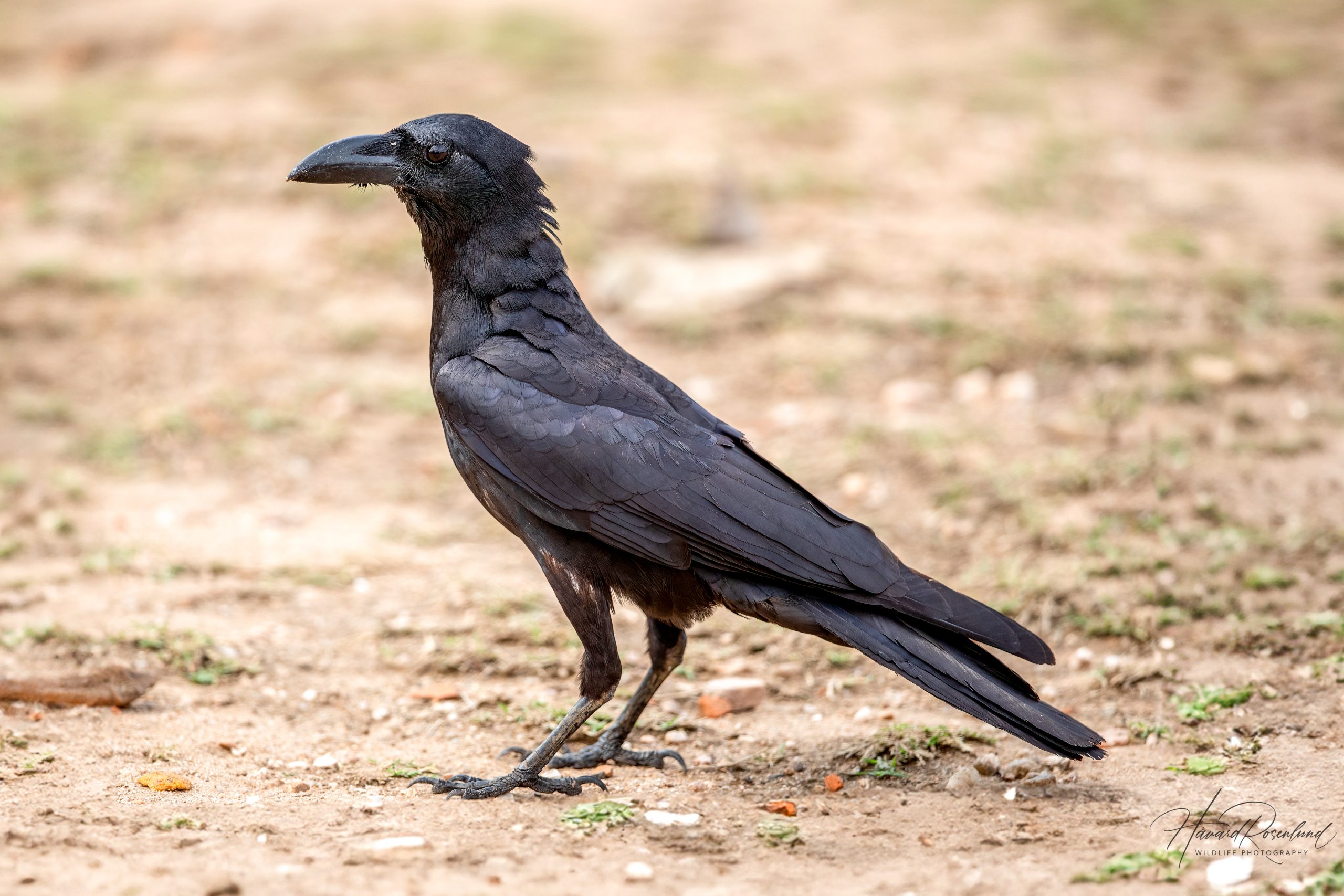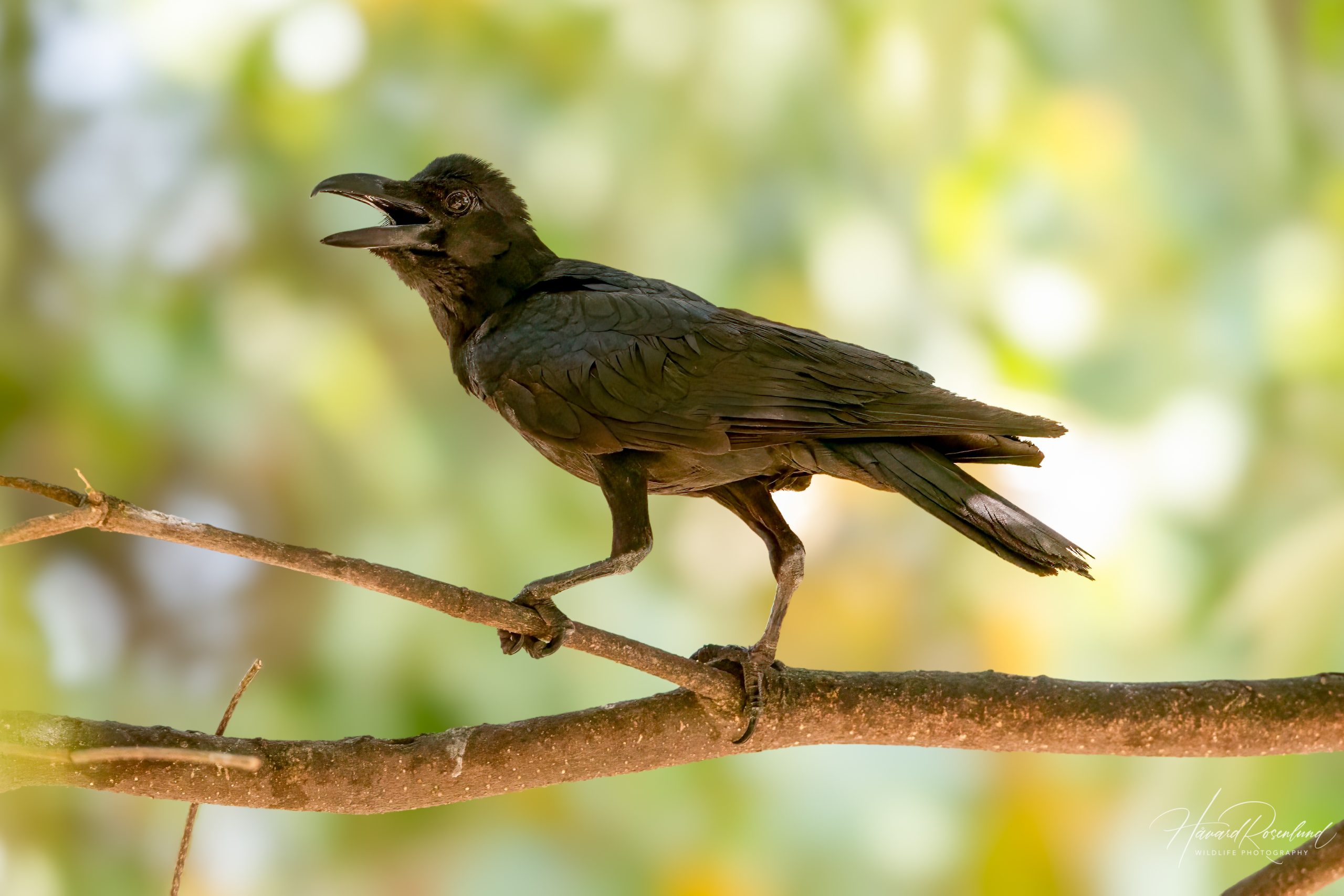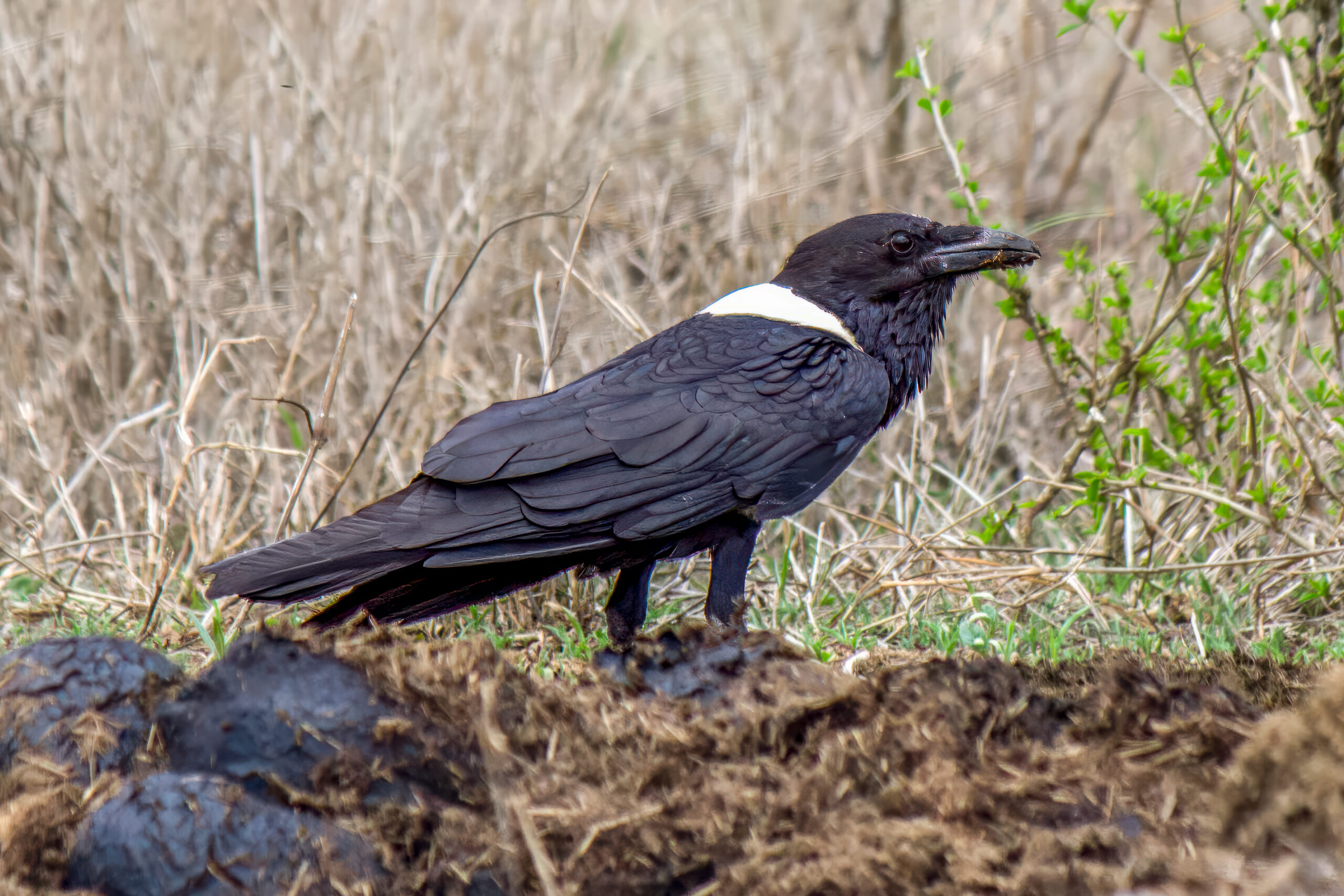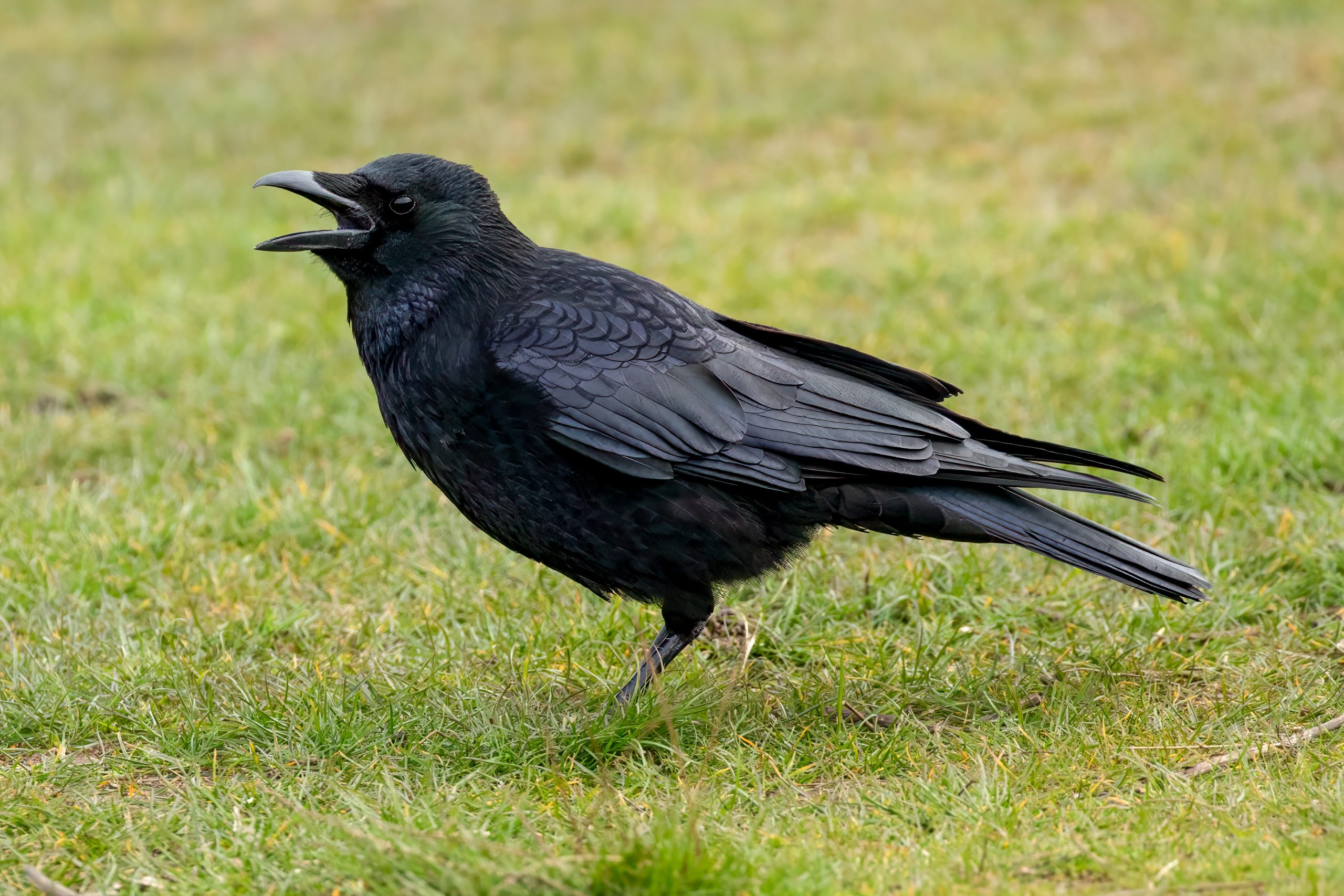Description
The large-billed crow (Corvus macrorhynchos), also known as the jungle crow in many parts of its range, is a large species of crow found across various parts of Asia, including India, China, Japan, and Southeast Asia. It is a robust bird, measuring about 46-59 cm (18-23 in) in length, with a wingspan of approximately 100-130 cm (39-51 in). One of the most distinguishing features of this species is its massive, thick bill, which is black and slightly curved. The plumage is entirely black, exhibiting a glossy sheen that can appear purplish or bluish under direct sunlight. Compared to similar species, such as the house crow (Corvus splendens) and the carrion crow (Corvus corone), the large-billed crow is significantly larger and has a more substantial bill. Additionally, its vocalizations are deeper and more guttural.
Diet & habitat
The large-billed crow is highly adaptable and can thrive in diverse habitats ranging from dense forests and rural areas to urban environments. It is commonly found in woodlands, agricultural fields, and cities, demonstrating remarkable versatility. This crow is an omnivorous feeder with a broad diet. It consumes a variety of foods, including insects, small mammals, birds, fruits, seeds, and human food waste. Its foraging behavior is opportunistic, often scavenging in urban areas. The large bill aids in breaking open hard-shelled nuts and accessing food items that other birds might find challenging to exploit.
Intelligence & social behavior
Known for its high intelligence, the large-billed crow exhibits advanced problem-solving skills and the ability to use tools. These crows have been observed using sticks to extract insects from tree bark and even dropping nuts onto hard surfaces to crack them open. They have also been known to mimic human speech and other sounds.
Socially, large-billed crows are highly gregarious and can form sizable flocks, especially outside the breeding season. They communicate using a complex system of vocalizations and body language, establishing social hierarchies and cooperative behaviors within their groups. Their social structures often include family units where members assist each other in various tasks, including raising young and defending territories.
Nesting
The breeding season for large-billed crows varies by region but generally occurs between March and July. They are monogamous and form long-term pair bonds. Nests are typically constructed high in trees using sticks and other plant materials, lined with softer substances like grass and feathers. A typical clutch consists of 3-5 eggs, which are incubated by the female for about 17-19 days. During this period, the male provides food for the female. Once hatched, both parents are involved in feeding and caring for the chicks. The fledgling period lasts around 30-35 days, after which the young crows gradually become independent but may stay with the family group for extended periods.
Status
The large-billed crow is currently listed as a species of least concern by the IUCN. It is not considered threatened, largely due to its adaptable nature and wide distribution. However, in some urban areas, it faces challenges such as habitat destruction and persecution due to its association with crop damage and its presence in human settlements.











